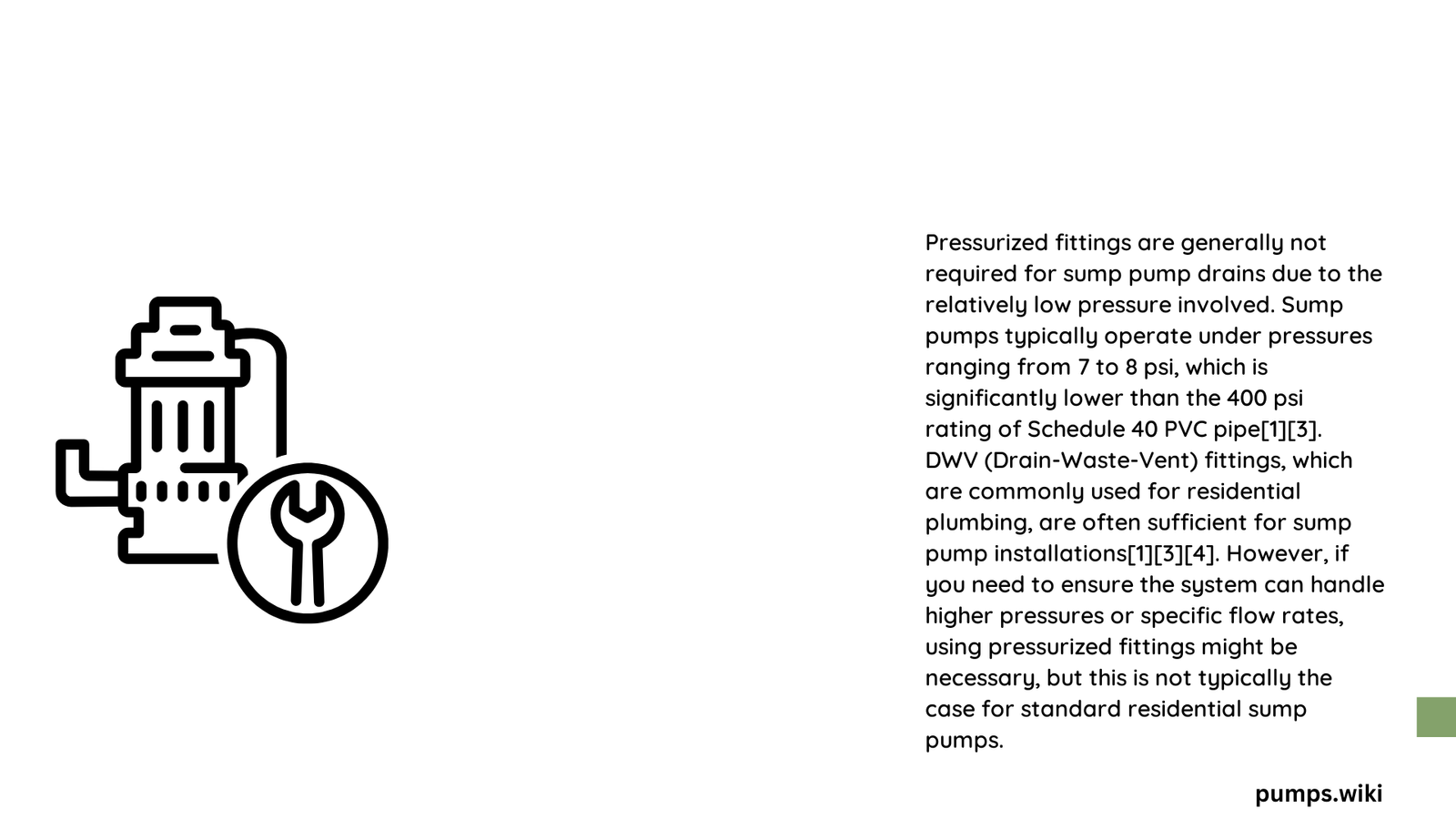Sump pump drain systems require careful consideration of fitting types and pressure requirements. Homeowners often wonder about the necessity of pressurized fittings for their drainage setup. While most residential sump pump applications do not demand high-pressure components, understanding the technical nuances can help ensure an efficient and reliable drainage system that effectively manages groundwater and prevents basement flooding.
What Are the Pressure Characteristics of Sump Pump Discharge Lines?
Sump pump discharge lines operate under relatively low-pressure conditions. Typical residential sump pumps generate minimal pressure, usually around 7-8 psi for a 15-foot head height. This low-pressure environment means that specialized pressurized fittings are often unnecessary.
Key Pressure Considerations
| Pump Type | Typical Pressure | Recommended Fitting |
|---|---|---|
| 1/3 HP Residential | 5-8 psi | Standard DWV Fittings |
| 1/2 HP Residential | 8-12 psi | Schedule 40 PVC Optional |
| Commercial Pumps | 12-20 psi | Pressurized Fittings Recommended |
Why Standard Fittings Work for Most Sump Pump Systems?

Pressure Dynamics
- Sump pumps generate minimal pressure (0.5 psi per foot of head)
- DWV (Drain, Waste, Vent) fittings are typically sufficient
- Schedule 40 PVC provides additional strength if needed
What Materials Should You Consider for Sump Pump Drain Fittings?
Recommended Materials
- PVC Schedule 40:
- Rated up to 400 psi
- Excellent durability
-
Cost-effective solution
-
DWV Fittings:
- Lightweight
- Suitable for low-pressure applications
- Easier to install
How to Select the Right Fittings for Your Sump Pump?
Selection Criteria
- Evaluate pump capacity
- Measure discharge line length
- Consider local building codes
- Assess groundwater conditions
Installation Best Practices
- Use PVC primer and cement
- Ensure watertight connections
- Install check valves to prevent backflow
- Slope discharge line away from foundation
What Potential Challenges Might You Encounter?
Common Installation Issues
- Leaky connections
- Improper pipe alignment
- Insufficient discharge distance
- Inadequate pipe diameter
Expert Recommendations
Professional plumbers generally recommend:
– Using 1 1/2″ PVC pipes for most residential applications
– Installing check valves
– Ensuring proper pipe slope
– Periodic system maintenance
Technical Specifications
Typical Sump Pump Discharge Specifications
- Pipe Diameter: 1 1/4″ to 1 1/2″
- Typical Flow Rate: 30-40 GPM
- Recommended Fitting Type: DWV or Schedule 40 PVC
Final Considerations
While pressurized fittings aren’t typically necessary, always consult local building codes and consider your specific installation requirements. Professional assessment can provide tailored guidance for your unique drainage needs.
When to Seek Professional Help
- Complex drainage scenarios
- Multiple discharge points
- High water table areas
- Unusual basement configurations
References:
– Plumbing Zone Sump Pump Discussions
– Sump Pump Manufacturer Guidelines
– Home Drainage Expert Recommendations
